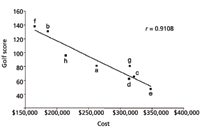Call for Appplication Notes
LCGC is planning to publish the next issue of The Application Notebook special supplement in September.
LCGC is planning to publish the next issue of The Application Notebook special supplement in September. The publication will include vendor application notes that describe techniques and applications of all forms of chromatography and capillary electrophoresis that are of immediate interest to users in industry, academia, and government. If your company is interested in participating in these special supplements, contact:
Michael J. Tessalone, Group Publisher,
(732) 346-3016
Edward Fantuzzi, Associate Publisher,
(732) 346-3015
Stephanie Shaffer, East Coast Sales Manager,
(08) 481-5885
Application Note Preparation
It is important that each company's material fit within the allotted space. The editors cannot be responsible for substantial editing or handling of application notes that deviate from the following guidelines:
Each application note page should be no more than 500 words in length and should follow the following format.
Format
- Title: short, specific, and clear
- Abstract: brief, one- or two-sentence abstract
- Introduction
- Experimental Conditions
- Results
- Conclusions
References
- Two graphic elements: one is the company logo; the other may be a sample chromatogram, figure, or table
- The company's full mailing address, telephone number, fax number, and Internet address
All text will be published in accordance with LCGC's style to maintain uniformity throughout the book. It also will be checked for grammatical accuracy, although the content will not be edited. Text should be sent in electronic format, preferably using Microsoft Word.
Figures
Refer to photographs, line drawings, and graphs in the text using arabic numerals in consecutive order (Figure 1, etc.). Company logos, line drawings, graphs, and charts must be professionally rendered and submitted as .TIF or .EPS files with a minimum resolution of 300 dpi. Lines of chromatograms must be heavy enough to remain legible after reduction. Provide peak labels and identification. Provide figure captions as part of the text, each identified by its proper number and title. If you wish to submit a figure or chromatogram, please follow the format of the sample provided below.

Figure 1: Chromatograms obtained using the conditions under which the ion suppression problem was originally discovered. The ion suppression trace is shown on the bottom. Column: 75 mm à 4.6 mm ODS-3; mobile-phase A: 0.05% heptafluorobutyric acid in water; mobile-phase B: 0.05% heptafluorobutyric acid in acetonitrile; gradient: 5â30% B in 4 min. Peaks: 1 = metabolite, 2 = internal standard, 3 = parent drug.
Tables
Each table should be typed as part of the main text document. Refer to tables in the text by roman numerals in consecutive order (Table I, etc.). Every table and each column within the table must have an appropriate heading. Table number and title must be placed in a continuous heading above the data presented. If you wish to submit a table, please follow the format of the sample provided below.

Table I: Factor levels used in the designs
References
Literature citations must be indicated by arabic numerals in parentheses. List cited references at the end in the order of their appearance. Use the following format for references:
(1) T.L. Einmann and C. Champaign, Science 387, 922–930 (1981).
The deadline for submitting application notes for the September issue of The Application Notebook is:
July 26, 2011
This opportunity is limited to advertisers in LCGC North America. For more information, contact:
Mike Tessalone at (732) 346-3016, Ed Fantuzzi at (732) 346-3015, or Stephanie Shaffer at (508) 481-5885.
The Complexity of Oligonucleotide Separations
January 9th 2025Peter Pellegrinelli, Applications Specialist at Advanced Materials Technology (AMT) explains the complexity of oligonucleotide separations due to the unique chemical properties of these molecules. Issues such as varying length, sequence complexity, and hydrophilic-hydrophobic characteristics make efficient separations difficult. Separation scientists are addressing these challenges by modifying mobile phase compositions, using varying ion-pairing reagents, and exploring alternative separation modes like HILIC and ion-exchange chromatography. Due to these complexities, AMT has introduced the HALO® OLIGO column, which offers high-resolution, fast separations through its innovative Fused-Core® technology and high pH stability. Alongside explaining the new column, Peter looks to the future of these separations and what is next to come.
Metabolomics Analysis of Low Birth-Weight Infants Using UHPLC-MS/MS Following Lipid Emulsion
January 10th 2025A recent study aimed to directly compare the changes in serum metabolites among very low birth-rate (VLBW) infants following the administration of the soybean oil-based lipid emulsion and soybean oil, medium-chain triglycerides, olive oil, and fish oil (SMOF) lipid emulsion using untargeted metabolomics techniques.
Analyzing New Drug Modalities: An ISC 2024 Interview with Kelly Zhang
January 10th 2025At ISC 2024 in Liverpool, United Kingdom, LCGC International interviewed Kelly Zhang of Genentech about her work analyzing new drug modalities, such as mRNA, oligonucleotides, peptides, and cell and gene therapies.